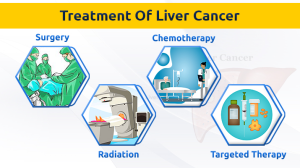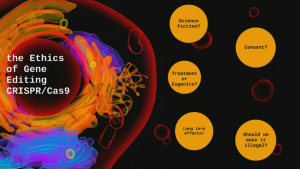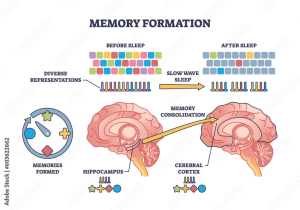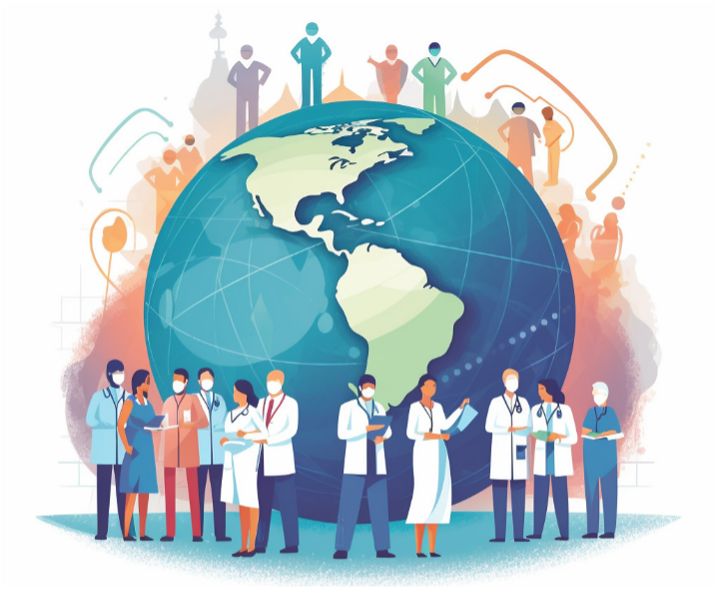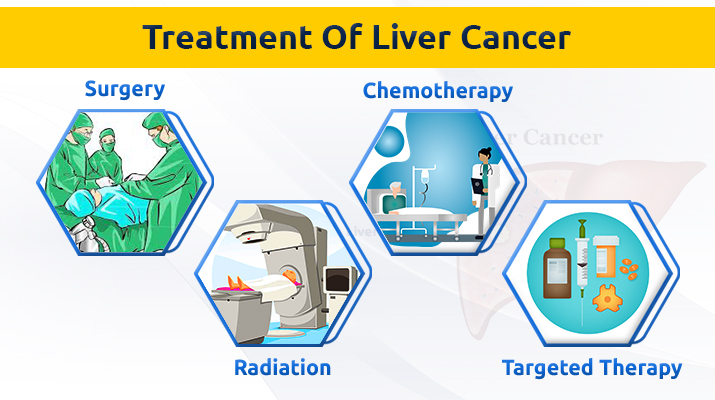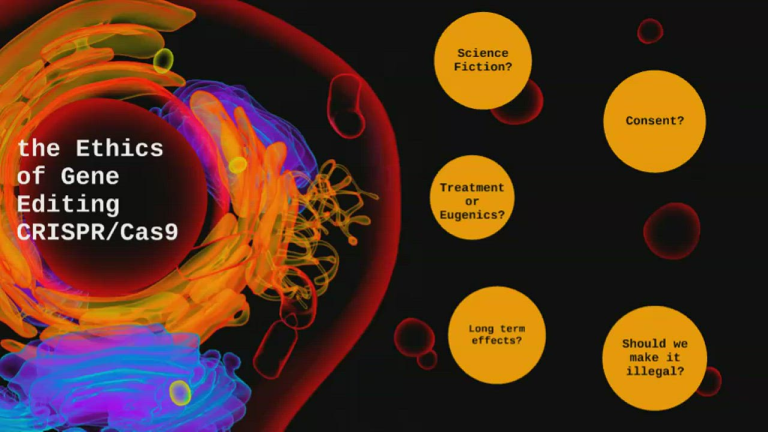Global health is an essential aspect of global stability and well-being, influencing the quality of life for millions around the world. As highlighted by renowned surgeon and author Atul Gawande, the challenges faced by health infrastructures, especially those impacted by cuts in programs like USAID, pose serious threats to public health initiatives. The deteriorating state of global health leadership affects everything from disease surveillance to maternal health services, underscoring the urgent need for renewed commitment and innovative solutions. With health crises emerging globally, it becomes crucial to restore the capabilities of organizations like USAID to effectively respond to public health challenges. Ultimately, addressing these issues requires a collaborative effort, leveraging expertise in health infrastructure to ensure a healthier future for all.
In discussing international health systems, one often refers to the interconnected nature of global health and its profound implications across nations. This concept incorporates the dynamics of health equity, disease prevention, and the facilitation of public health initiatives worldwide. Figures like Atul Gawande emphasize the importance of robust health infrastructures and the critical role of organizations such as the U.S. Agency for International Development (USAID) in shaping health policies. By fostering global health leadership, we can mobilize resources and expertise towards initiatives that effectively combat diseases and improve health outcomes. This holistic approach is vital in navigating the complexities of health challenges that transcend borders.
The Impact of Dismantling USAID on Global Health
Atul Gawande’s remarks on the dismantling of the U.S. Agency for International Development (USAID) underscore the significant challenges faced by global health initiatives today. As a former leader at USAID, Gawande highlighted the devastating consequences of the agency’s drastic budget cuts and staff reductions, which have jeopardized the health infrastructure in over 50 countries. Programs that effectively responded to disease outbreaks have been critically weakened, leading to slower emergency responses and ultimately, loss of lives that could have been spared. The commitment to prevent maternal and childhood deaths, among other public health successes, has now become a shadow of its former self.
The ramifications extend beyond immediate health outcomes; they impact the U.S.’s position as a global health leader. A strong USAID was instrumental in leading partnerships with entities like the World Health Organization, fostering a collaborative approach to tackle significant health challenges. Gawande’s call to action suggests that, while the agency cannot fully regain its previous status, there remains hope that the contributions to global health can be salvaged. Rebuilding this infrastructure is needed not just for our own advancements but for the collective health of nations around the world.
Gawande’s Vision for the Future of Health Infrastructure
In addressing the future of health infrastructure, Gawande emphasized that it is not too late to salvage what has been lost. His experience indicates that through strategic investment and a renewed commitment to science and medicine, the U.S. can once again play a pivotal role in global health advancement. This hope is anchored in the potential for innovative solutions and collaboration among health professionals and policymakers. Gawande’s advocacy for programs that ensure follow-through is vital — enhancing vaccination rates, improving maternal health outcomes, and developing novel treatment protocols are all achievable with a united effort.
The need for robust health infrastructure presents both a challenge and an opportunity. As public health initiatives face significant funding freezes, it is crucial to recognize the essential nature of these services. Gawande’s example of successful programs that once flourished under USAID serves as a blueprint for how targeted investments can yield significant health benefits. By fostering partnerships with universities, research centers, and other stakeholders, the U.S. can re-establish itself as a leader in global health, effectively responding to health crises and ensuring that talented professionals remain engaged in critical health challenges.
Public Health Challenges and Their Global Implications
The current landscape of public health is riddled with challenges that have been exacerbated by reductions in funding and support from governmental agencies, particularly USAID. The global community faces unprecedented health crises, from infectious disease outbreaks to the ongoing impacts of climate change on health. Gawande’s insights affirm that these challenges require not only immediate action but also long-term strategic planning to safeguard against future health emergencies. The interconnectedness of global health issues means that every decision made today will have far-reaching implications for public health worldwide.
Moreover, the lack of sustainable health systems in developing countries has heightened vulnerability to health emergencies. With infectious diseases rapidly spreading, the urgency for global cooperation has never been more critical. Gawande’s advocacy for sustainable health infrastructure emphasizes that investments in health not only protect lives but also bolster economies and enhance national security. In the face of ongoing challenges, it is imperative that public health leaders continue to innovate and adapt, finding resilience in collaboration and shared knowledge.
Global Health Leadership in Uncertain Times
Amid the uncertainties surrounding the future of global health leadership, Gawande’s message resonates strongly. With the U.S. relinquishing its previous status as a primary influencer in global health, questions arise about who will step forward to fill that void. Gawande suggests that while other nations might take the reins, regional leaders, particularly in states like Massachusetts, are poised to make significant contributions to health leadership. This shift could herald a new era of global health governance, characterized by decentralized and diversified leadership.
Gawande remains optimistic that the passion and expertise of emerging health leaders, drawn from various backgrounds, will continue to inspire advancements in global health. This dynamic might foster innovative solutions that could fill the gaps left by U.S. agencies. The emergence of a new generation of health experts will be essential in reshaping global health policy and practice, making resilience and adaptability paramount in facing future global health challenges.
The Role of Education and Advocacy in Public Health
Education and advocacy play crucial roles in molding the future of public health initiatives. Gawande’s engagement with students and faculty is a call to action for the next generation of health professionals to embrace their roles as advocates for science and medicine. By learning from past successes and failures, these individuals can better navigate the complexities of public health, advocating for systemic changes that enhance overall health outcomes. As Gawande pointed out, expertise will be essential in tackling the health crises that arise in both local and global contexts.
Furthermore, promoting awareness about the interconnectedness of health systems enhances the collective effort required to overcome challenges. Gawande encourages collaboration among different sectors, emphasizing that shared knowledge and resources can lead to more effective health interventions. Engaging with policy development and advocating for equitable health access will be key in shaping a healthier future, not only for Americans but for populations globally. The role of education in public health cannot be overstated—it equips current and future leaders with the tools needed to advocate for change effectively.
Innovations in Healthcare and Their Global Reach
In an era marked by rapid technological advancements, innovation within healthcare is crucial for improving global health outcomes. Gawande’s work and insights into practical solutions highlight how new technologies can transform healthcare delivery. His emphasis on creating innovative programs to tackle maternal and child mortality showcases how targeted interventions can yield significant benefits for vulnerable populations. Such innovations demonstrate the potential for enhancing the efficiency of health systems worldwide, ensuring that critical care reaches those most in need.
Additionally, leveraging technology for data collection and health surveillance can enhance the ability to respond swiftly to public health threats. Gawande’s acknowledgment of the importance of surveillance systems reinforces the necessity for continuous improvement and investment in health infrastructure. As healthcare organizations collaborate internationally, sharing successful innovations becomes pivotal in fostering a culture of learning and adaptation. The globalization of healthcare innovations holds the promise of elevating health standards globally, bridging the gaps between resource-rich and resource-poor regions.
The Economic Implications of Health System Failures
The economic implications of health system failures are profound and multifaceted. Gawande’s observations illuminate how the dismantling of USAID’s programs not only risks lives but threatens economic stability across multiple domains. Poor health outcomes can directly affect workforce productivity, leading to increased healthcare costs and reduced economic growth. Countries that face significant health crises often see a downturn in development, making immediate investment in health systems not just a humanitarian endeavor, but an economic necessity.
Moreover, investing in health infrastructure serves as a catalyst for economic development. Gawande’s insights into successful programs demonstrate that when populations are healthy, they are more able to contribute to economic activities and growth. The reverse trend, evident in regions suffering from health system failures, underscores the urgency with which governments and organizations must act. Prioritizing health funding and infrastructure is essential for fostering resilience and promoting sustainable development in the long term.
Advancing Maternal and Child Health Initiatives
The urgent needs associated with maternal and child health have been a focal point of many global health advocates, including Atul Gawande. He emphasizes that innovations in treatment protocols can significantly impact outcomes for mothers and children, particularly in developing nations. These initiatives have the potential to drastically reduce maternal mortality rates, which is a critical concern globally. The importance of targeted interventions, such as the affordable treatment packages to address severe hemorrhaging after childbirth, highlights the need for comprehensive programs that can be scaled up effectively.
Moreover, the intersection of community engagement and maternal health initiatives creates an opportunity for sustainable impact. Gawande’s advocacy for programs that reach women during pregnancy is essential in ensuring they receive care and support. Investing in education about maternal health and creating networks for women can foster empowerment, leading to healthier populations. With the right investment in resources and education, the promise of improved maternal and child health outcomes can be realized, benefiting families and communities globally.
Restoring Faith in Science and Medicine
Gawande’s call for renewed faith in science and medicine reflects a critical moment for public health amidst widespread doubt and skepticism. He insists on the importance of maintaining rigorous scientific standards and transparency as the foundation upon which health policies should be built. The events surrounding the dismantling of USAID highlight the consequences of politicizing health decisions, which have led to significant public health setbacks. Restoring faith will require a unified voice advocating for evidence-based practices and a commitment to uphold the integrity of public health science.
Moreover, as global health leaders navigate these turbulent times, engaging with communities to emphasize the science-backed interventions is key. Gawande encourages future health professionals to advocate for public trust in health systems through transparent communication and engagement strategies. By building a culture of respect for science and collaborative problem-solving, we can promote a robust public health environment that not only saves lives but also builds resilience in facing future challenges.
Frequently Asked Questions
What challenges does USAID face in global health leadership?
USAID has experienced significant challenges in global health leadership due to recent administrative changes that led to the dismantling of crucial programs and staff. The agency, which previously played a vital role in global health initiatives, now grapples with reduced funding and a diminished capacity to respond to health crises. Despite these challenges, there’s a strong call to restore its health infrastructure and maintain its global health influence.
How did Atul Gawande contribute to global health during his time at USAID?
Atul Gawande made substantial contributions to global health at USAID by spearheading innovative health programs. Under his leadership, the agency built a rapid disease surveillance network across 50 countries, significantly improving response times to global health threats like Ebola and malaria. He focused on enhancing maternal and child health outcomes and was pivotal in developing affordable treatment protocols to prevent complications during childbirth.
What is the impact of cuts to health infrastructure on global health outcomes?
Cuts to health infrastructure, particularly at agencies like USAID, have dire consequences for global health outcomes. These reductions jeopardize critical services that support disease prevention and treatment initiatives, affecting millions of lives. Gawande emphasized that such cuts would lead to increased health disparities and a decline in successful health interventions that previously saved lives.
Why is the USA considered important in global health?
The USA is considered an important player in global health due to its extensive resources, research capabilities, and historical commitment to health initiatives worldwide. Through agencies like USAID, the USA has been a leader in tackling infectious diseases, supporting maternal health, and enhancing health networks globally. The dismantling of these programs poses a risk to the U.S.’s leadership role in addressing global health challenges.
What roles do technical assistance and follow-through play in strengthening global health?
Technical assistance and follow-through are crucial in strengthening global health efforts, as they ensure the implementation and sustainability of health programs. According to Gawande, these strategies not only help increase vaccination coverage but also enhance the effectiveness of health interventions, transforming initial efforts into sustained health improvements for populations in need.
What future does Atul Gawande envision for global health leadership?
Atul Gawande remains hopeful for the future of global health leadership, despite uncertainties regarding the U.S.’s commitment to leading the way. He suggests that if the U.S. steps back, other nations and leaders may rise to fill the void, emphasizing the importance of sustained commitment and expertise in global health, regardless of the political climate.
How can individuals engage in global health despite national challenges?
Individuals can engage in global health by advocating for science and public health initiatives, participating in research, and collaborating with organizations focused on health improvements. Gawande encourages aspiring health professionals to harness their skills and knowledge, as their expertise will remain vital in addressing global health issues, irrespective of national challenges.
What historical successes has USAID achieved in global health?
Historically, USAID has achieved significant successes in global health, including the establishment of robust vaccination programs and intervention strategies that reduced maternal and child mortality rates. By funding critical health infrastructure and emergency response systems, USAID has played a key role in combating infectious diseases, improving health outcomes, and saving millions of lives across the globe.
| Key Points | Details |
|---|---|
| Dismantling of USAID | Severe cuts under the Trump administration led to staff layoffs and program terminations. |
| Impact on Global Health | Millions affected, and U.S. leadership in global health weakened. |
| Gawande’s Role | Formerly led USAID’s Bureau for Global Health, emphasized importance of science and healthcare. |
| Research Funding Issues | Funding cuts have threatened medical research and partnerships, including those at Harvard. |
| Successful USAID Programs | Implemented strategies in various countries leading to improvements in maternal and child health, HIV, tuberculosis, and malaria, |
| Long-term Outlook | Despite challenges, Gawande maintains a hopeful view of global health future. |
| Alternative Leadership | If the U.S. withdraws from leadership, other countries and states will step in. |
Summary
Global health is at a critical juncture, as outlined by Atul Gawande’s reflections on the past and future of USAID and its implications for health worldwide. The dismantling of leadership roles and funding within the U.S. has led to severe challenges in global health initiatives, directly affecting millions. Yet, there remains hope as emerging leaders may rise to foster innovation and address health disparities. It is essential to remain committed to collaborative efforts that prioritize science and public health.

